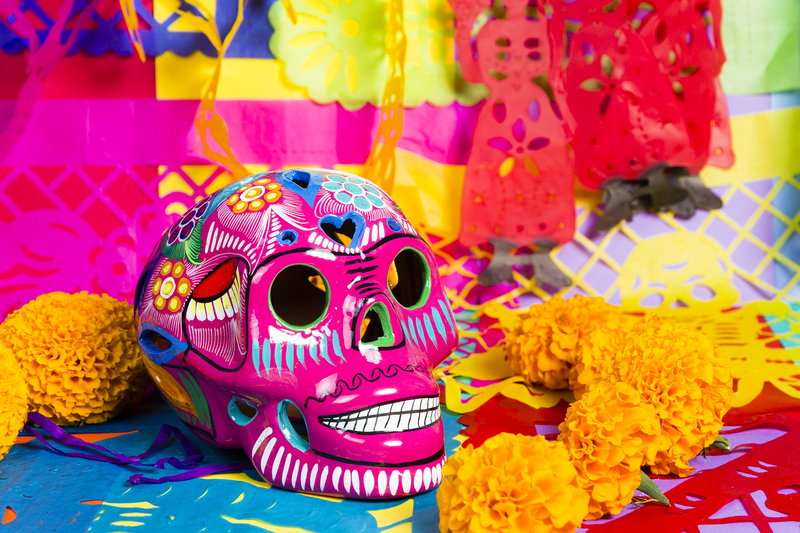Essentials for Making Your Poinsettias Last
Posted on 26/08/2025
Essentials for Making Your Poinsettias Last
Poinsettias are a holiday staple, gracing homes with their vibrant red, white, or pink bracts every winter. But what if your poinsettia could last longer than just a few festive weeks? With the right care, your poinsettia can thrive well beyond the holidays--sometimes even for years. In this comprehensive guide, we'll uncover the key tips and essentials for making your poinsettias last, helping you enjoy their vivid beauty for seasons to come.

Understanding Poinsettias: More Than a Holiday Decoration
Before diving into care specifics, it's vital to understand what makes poinsettias unique. Native to Mexico and Central America, the Euphorbia pulcherrima is a tropical plant known for its strikingly colored bracts--which many mistake for flowers. These plants thrive in warm climates with plenty of indirect sunlight, and their longevity is tied directly to the attention they receive.
What Determines the Lifespan of Poinsettias?
- Light exposure
- Temperature fluctuations
- Watering habits
- Humidity levels
- Soil quality
- Pest management
Let's explore each essential factor in depth to ensure that your poinsettia not only survives but thrives.
1. Choosing the Right Poinsettia
It all starts with selection. Healthy plants will naturally last longer. When you purchase a poinsettia, look for the following signs of vitality:
- Deep green leaves (avoid plants with yellowing or wilting foilage)
- Drainage holes in the container
- No signs of pests or powdery mildew
- Small, tightly clustered yellow buds in the center of the bracts (these are the actual flowers)
*Tip: Poinsettias shipped or displayed in freezing or very hot conditions often suffer shock. Choose a local supplier or ensure your plant is kept between 60-70?F during transport and shopping.*
2. Perfect Placement: Light and Temperature
Poinsettias thrive in bright, indirect light. Place them near a sunny window, but avoid direct midday sun, which can scorch the leaves. Consistency is essential for longevity.
Ideal Light Conditions
- At least 6 hours of filtered indirect sunlight daily
- Rotate the plant every few days for even exposure
Temperature Guidelines
- Daytime: 65-70?F (18-21?C)
- Nighttime: 60?F (15?C) minimum
- Keep away from drafts, heaters, and fireplaces
- Avoid sudden temperature changes
Even brief exposure to cold can drastically reduce the lifespan of your poinsettia. Protect your plant from temperature extremes at all times.
3. The Art of Watering Poinsettias Correctly
Watering is the most crucial element for making your poinsettias last. Both overwatering and underwatering cause premature leaf drop or root rot.
- Check the soil moisture regularly: Insert your finger about an inch below the surface. If it feels dry, it's time to water.
- Water thoroughly: Allow excess water to drain completely--never let the pot sit in a saucer of water.
- Avoid wetting the leaves: Moisture on bracts or leaves can encourage fungal problems.
Pro Tip: Most poinsettias are wrapped in decorative foil--remove or puncture the foil to avoid water accumulation in the bottom of the pot.
4. Humidity & Air Circulation
These tropical beauties prefer moderate humidity. Indoors, especially during winter, homes tend to have drier air due to heating.
- Use a humidity tray: Place the pot on a tray of pebbles and water, ensuring the pot doesn't touch the water directly.
- Group plants together: Houseplants collectively raise the humidity.
- If possible, use a room humidifier.
- Avoid excessive airflow that dries leaves quickly (such as from vents).
Good air circulation is beneficial but avoid cold drafts or direct airflow on the plant.
5. Fertilizing for Long-Lasting Poinsettias
While fertilizing is unnecessary during the active blooming season (usually late November through January), regular feeding is important during the growth phase.
- After the holidays (late winter/early spring), fertilize once per month with a balanced, all-purpose houseplant fertilizer (like 20-20-20).
- Do not fertilize when the plant is in bloom, as this may stress the plant.
Proper feeding encourages healthy root and leaf development, which forms the foundation for next year's spectacular blooms.
6. Pruning and Re-Blooming: Getting More from Your Poinsettia
With the right touch, it's entirely possible to enjoy your poinsettia again next holiday. Here's how to encourage reblooming:
Pruning Instructions
- When bracts fade (usually in March or April), prune the stems back to about 4-6 inches tall.
- Repot if roots are crowding the container.
- Encourage branching by pinching new growth tips every few weeks until late summer.
Re-Blooming Essentials
To make your poinsettias last and bloom again:
- In late September or early October, the plant needs extended darkness--cover for 14-16 hours each night (a closet or box works well), while maintaining bright indirect light during the day.
- Continue this dark treatment until the bracts color up (usually 8-10 weeks).
This photoperiod treatment is essential for re-blooming. Consistency is the key: any interruption of the dark period can delay or prevent blooming.
7. Pest and Disease Management
Making poinsettias last isn't just about water and light--it's also about protecting your plant from insects and diseases.
- Common pests: Whiteflies, spider mites, mealybugs, and aphids. Inspect leaves regularly and treat with insecticidal soap if needed.
- Diseases: Overwatering may lead to root rot and powdery mildew. Ensure proper drainage and avoid leaf wetness.
- Remove dead or diseased foliage immediately to prevent spread.
Remember: Healthy, vigorous plants are less likely to succumb to pests and diseases.
Summary Checklist: Essentials for Poinsettia Longevity
- Buy healthy, vibrant plants
- Provide bright, indirect sunlight
- Keep temperature stable (60-70?F)
- Water only when the top inch of soil is dry
- Maintain moderate humidity
- Avoid drafts and direct heat sources
- Prune after blooming and encourage branching
- Fertilize in spring and summer
- Initiate dark treatment in fall for reblooming
- Monitor and treat pests promptly

Frequently Asked Questions About Poinsettia Care
How long can a poinsettia last indoors?
With optimum care, a poinsettia can last several months, and sometimes even thrive for years as a houseplant. Its bracts will naturally fade after several weeks, but the plant itself can be kept healthy year-round.
Is it hard to get a poinsettia to rebloom?
While it takes dedication, it's not overly difficult. Strict adherence to the dark period photo-treatment is necessary for next season's colorful display.
Are poinsettias poisonous to pets?
Poinsettias have a mild toxicity to cats and dogs, causing mouth irritation or stomach upset if ingested in large amounts. They are not highly poisonous, but it is wise to place them out of reach.
How often should I water my poinsettia?
Water only when the top inch of soil feels dry. Frequency depends on your home's humidity and temperature, but once or twice a week is common. Always empty excess water from saucers.
Why are the leaves falling off my poinsettia?
Leaf drop is most commonly caused by:
- Sensitivity to cold drafts or heat
- Overwatering or underwatering
- Sudden changes in light
Final Thoughts: Enjoy Poinsettia Beauty Long After the Holidays
By following these proven essentials for poinsettia longevity, you can transform your holiday plant from a disposable decoration to a year-after-year treasure. With just a little extra care and attention, making your poinsettias last is completely achievable--rewarding you with lush, colorful displays that brighten your home not just at Christmas, but well beyond!
Looking for more gardening tips to keep your plants thriving? Bookmark this guide and share it with your friends--because every plant deserves a long, healthy life.
Latest Posts
Where to Find Unique Wildflowers in [AREA] This Spring
Essentials for Making Your Poinsettias Last
Crafting a Holistic Orchid Care Plan
3 foolproof methods to preserve your flowers
Your Birth Flower's Insights: What It Tells About You and Your Journey





